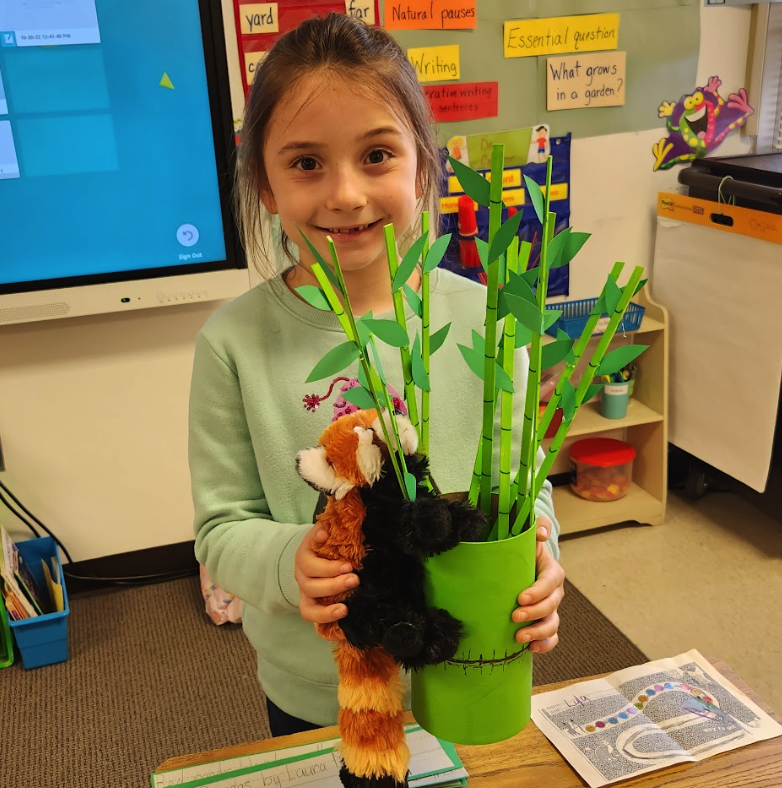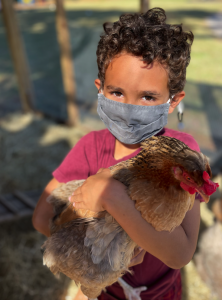Curriculum
Christopher Academy offers a developmentally appropriate curriculum that challenges students to do their personal best cognitively, socially, physically and emotionally. The curriculum and program focus on preparing students to be academically and socially successfully in the 21st Century. The School provides a stimulating environment in which hands-on, experiential learning opportunities encourage students to explore and discover through project based and STEM inspired instruction. By developing a strong foundation in language arts and math skills, our students become confident learners. Science and social studies instruction, enriched by exciting field trips, provides opportunities for our students to explore their environment and to gain understanding of our history. Spanish instruction begins at first grade. All students (Preschool – 5th grade) enjoy weekly art and music classes. Technology is integrated throughout the curriculum. Outdoor play is a favorite part of the day for our preschoolers. Physical Activity classes are offered for our elementary students.
KINDERGARTEN
Our Kindergarten program is a full-day program. Students attend school from 8:30 to 3:00 p.m. Students must be 5 years old or older by September 30.
To establish a strong foundation for the elementary grades, kindergarten provides a hands-on curriculum that is developmentally appropriate. Students work with a team of teachers. During morning hours, students will rotate between the language arts classroom and the math/science classroom.
K-Cubs is the name we use for our afternoon kindergarten program . These open ended times enable teachers to set up learning experiences that are student centered and project based often inspired by the interests of the students themselves. Students learn to set goals, collaborate, and solve problems. Sign language instruction and emphasis on good manners are part of the K-Cubs program. Kindergarten students also love partnering with 5th grade students for a gardening project each year. Both K and 5th grade students benefit from and enjoy their special relationship.
ELEMENTARY
Language Arts-The language arts curriculum for K-5th grade students is Houghton Mifflin Harcourt. This comprehensive language arts program encourages students to love to read and become confident writers. The program also encourages students to engage in a wide variety of oral expression activities. A digital-print combination approach is used to develop comprehension, phonics, vocabulary, spelling, handwriting, oral language, listening strategies, grammar and writing skills. Students engage in leveled instruction to ensure that each student flourishes and achieves reading success. Teachers enhance the program with many teacher designed activities. Supplemental digital resources include Accelerated Reader, Spelling City, Storia School Edition, BookFlix and TrueFlix.
Mathematics-Through the Chicago Everyday Math program, thinking with mathematics becomes as natural as thinking with language. While building a strong foundation in basic math skills, the program also emphasizes the development of critical thinking and problem solving skills. Students learn new concepts and practice familiar ones by using manipulatives, playing games, and applying math to real life situations. Each student has his/her own tool kit which consists of a calculator, ruler, tape measure, template, counters and container of coins. These “tools” enable students to explore math situations and solve problems.
Science-Science is the continuing study of our natural world. Teachers strive to stimulate inquisitive minds while teaching broad scientific concepts. Real and simulated learning experiences using inquiry and discovery techniques enable students to understand many complex scientific principles. Goals of the program include teaching students to protect the environment, cultivating a lifelong interest in science, encouraging ecological awareness while developing an understanding of how our actions impact the environment.
Instruction emphasizes the value of experiencing science concepts rather than recalling a body of specific facts. Beginning in kindergarten, teacher designed, hands-on activities are supported by field trips and in-house special events. Concepts are integrated with math and language arts. The fourth and fifth grade curriculum is centered on a comprehensive program developed by AIMS Education Foundation. Basic research skills are taught and practiced. Instruction is enhanced and supported using electronic devices, online resources, and videos.
Students engage in a variety of experiences in science. Kindergarten students make bird feeders and plant bulbs. First graders adopt a tree and observe seasonal changes. Second graders participate in the Elizabeth River Project to educate other students about environmental awareness. Third graders design space aliens as part of a solar system report/project. Students in fourth grade participate in an oyster restoration project to raise awareness and to help restore the health of local waterways and the Chesapeake Bay. Oysters are transplanted to a protected reef. Fifth graders study wetlands and grow native marsh grass. The marsh grass is transplanted to restore wetlands along local waterways. Students can have a primary role in keeping the environment clean, teach others about environmental awareness, and instruct the class as follow-up to research.
Social Studies & Geography-First through third geography skills include intermediate and cardinal directions, mapping and types of maps, and locating states and regions. Social Studies units begun in first grade on family and local community broaden to include rural, suburban, urban, and historical communities by third grade. Topics include Native Americans; Early Explorers; Colonial Life; Functions of State and National Government; and Contributions of Ancient Egyptian, Greek and Roman Civilizations. Fourth and fifth social studies units expand to a more complex study of American history, state regions, trade and transportation. The Houghton Mifflin Harcourt Social Studies curriculum is used K-5th grade. Field trips and projects enhance instruction at each grade level.
Art-The art curriculum provides opportunities for students to explore a wide range of art materials and techniques. Being exposed to professional artists’ works inspires students to create their own artwork using a similar style. Students investigate art in other cultures and in literature. This exploration leads to an appreciation of art. Students enjoy the creative process and express themselves in an enthusiastic, confident manner. Students in K – 5th grade have weekly art classes. Students enjoy the thrill of seeing their “masterpieces” displayed in the hallways. Students visit art museums and may participate in art workshops. Occasionally, artists/craftsmen are invited to visit our classes.
Music-Music is taught as a step program. Basic skills are introduced in kindergarten. These skills are added to and built upon with each grade level. All students can develop an appreciation for music while some students show greater aptitude and ability. Activities and lessons are designed to accommodate varying skill levels. Instruction at all grade levels includes a variety of songs, musical games and dances that are age and developmentally appropriate. Selected songs and activities provide practice in specific skills while others support a holiday, seasonal or instructional theme. Movement to music supports development of gross motor skills and gives students the opportunity to explore what their bodies can do in space. Students in first through fifth grades perform in a musical program each year. Recorders are introduced at third grade. Third – fifth grades attend a performance of the symphony once a year.
Spanish-Weekly classes offer basic conversational skills. Vocabulary skills and cultural awareness are enriched through music and dance. Second, third, fourth and fifth grade students research and present reports and projects on various aspects of Spanish Culture.
Physical Activity-Physical fitness and safety are important to the development of a well-rounded student. A developmentally appropriate program of physical activity promotes the integration of a healthy mind and body. A safe, noncompetitive environment fosters the development of team/school spirit and good sportsmanship. By participating in individual, partner and group activities, students gain self-confidence and a positive self-image. As students engage in a variety of games and activities, they build the foundation for a healthy lifestyle. Learning and practicing safety procedures for physical activities, fire evacuations, storm emergencies and other crisis situations provides a sense of security. Students in first through fifth grades have two regularly scheduled PA classes weekly. In addition, all classes have daily recess when weather permits. Third, fourth and fifth graders are transported to the nearby YMCA once a week for classes that may include basketball, swimming, indoor soccer and other activities.
Technology-Technology is integrated throughout the curriculum to prepare students to live and work in the 21st century. A clear understanding of technology systems is essential to the success of students as they solve problems and make informed decisions. Students are taught, from the very early age of three, to use technology and the related tools responsibly. Digital citizenship, including appropriate and responsible use of technology, is taught and modeled at all grade levels. Students are made aware of not only the value of technology, but also the ethical and societal issues and dangers that accompany it. CA uses a technology program that uses Google Apps as a platform and Google devices for instruction, practice and application of skills.

